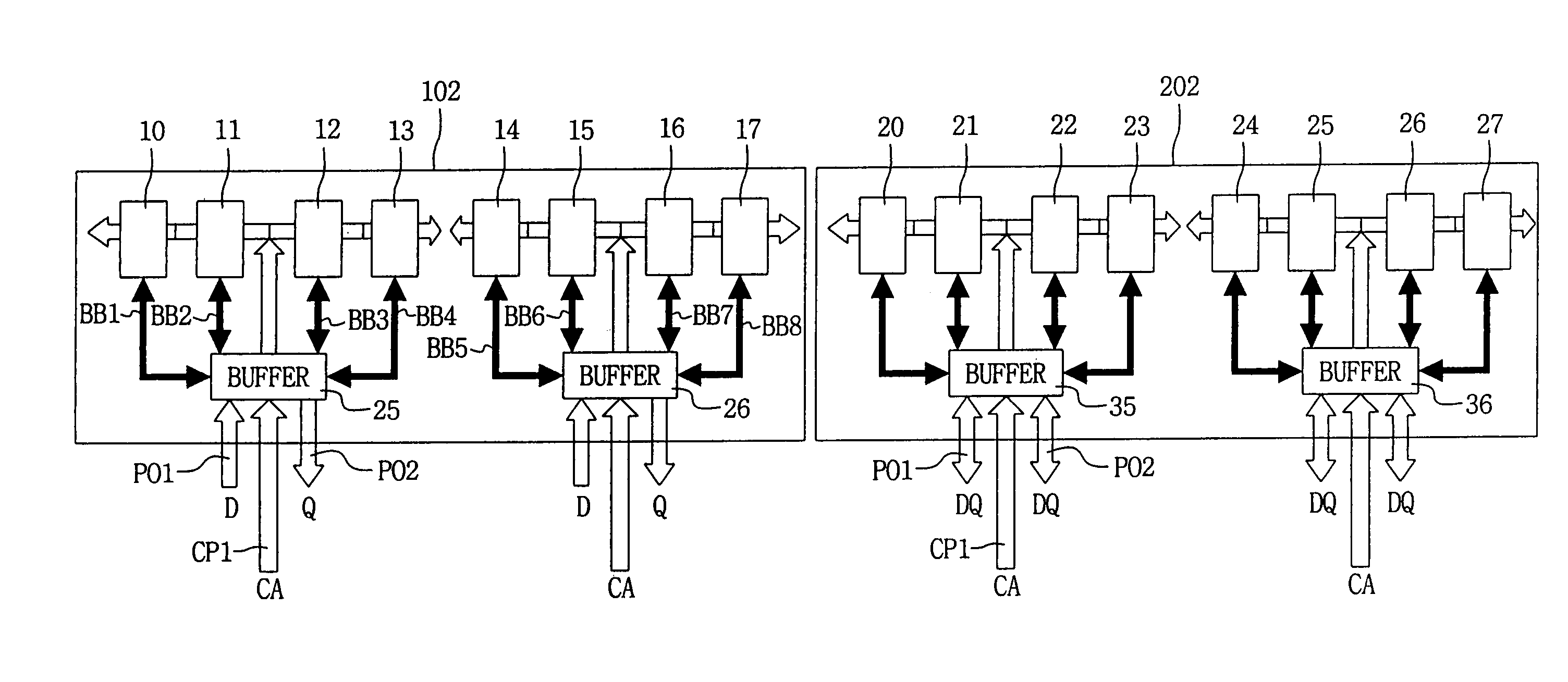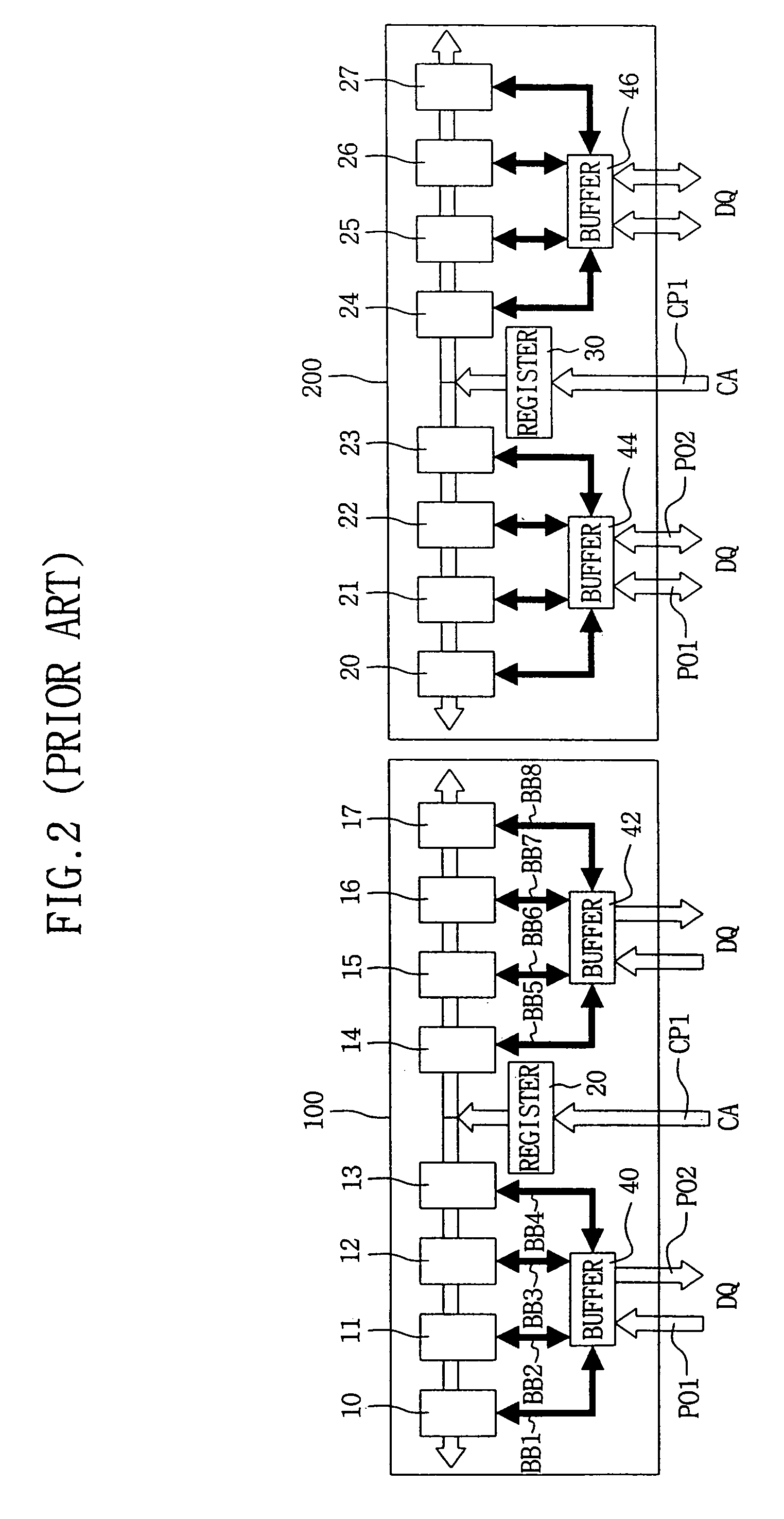Memory module device for use in high-frequency operation
- Summary
- Abstract
- Description
- Claims
- Application Information
AI Technical Summary
Benefits of technology
Problems solved by technology
Method used
Image
Examples
third embodiment
[0028]FIG. 5 is a block diagram illustrating the present invention. In the structure of FIG. 5, the CA register and the DQ buffer are once again integrated into a single chip 25A, 26A, 35a, 36a, as in the structure of FIG. 4, and further, all DQ buses and CA buses have the “point-to-point” bus structure. Therefore, since the CA signals and the DQ signals are synchronized in the memory system, the integrated buffer becomes released from the operation of synchronizing the CA and the DQ. Moreover, the CA and the DQ are simultaneously driven toward the DRAM from a single integrated chip, thus the CA and the DQ are synchronized easily at the DRAM. Also, as in the configuration of FIG. 4, the number of DRAMs driven by one integrated buffer is reduced to half, thus the propagation delay tPD of the CA signal is reduced to a half in comparison with the configuration of FIG. 3. As a result, operating frequency is improved, as discussed above. In this case, further, the frequency of the CA sig...
PUM
 Login to View More
Login to View More Abstract
Description
Claims
Application Information
 Login to View More
Login to View More - R&D
- Intellectual Property
- Life Sciences
- Materials
- Tech Scout
- Unparalleled Data Quality
- Higher Quality Content
- 60% Fewer Hallucinations
Browse by: Latest US Patents, China's latest patents, Technical Efficacy Thesaurus, Application Domain, Technology Topic, Popular Technical Reports.
© 2025 PatSnap. All rights reserved.Legal|Privacy policy|Modern Slavery Act Transparency Statement|Sitemap|About US| Contact US: help@patsnap.com



